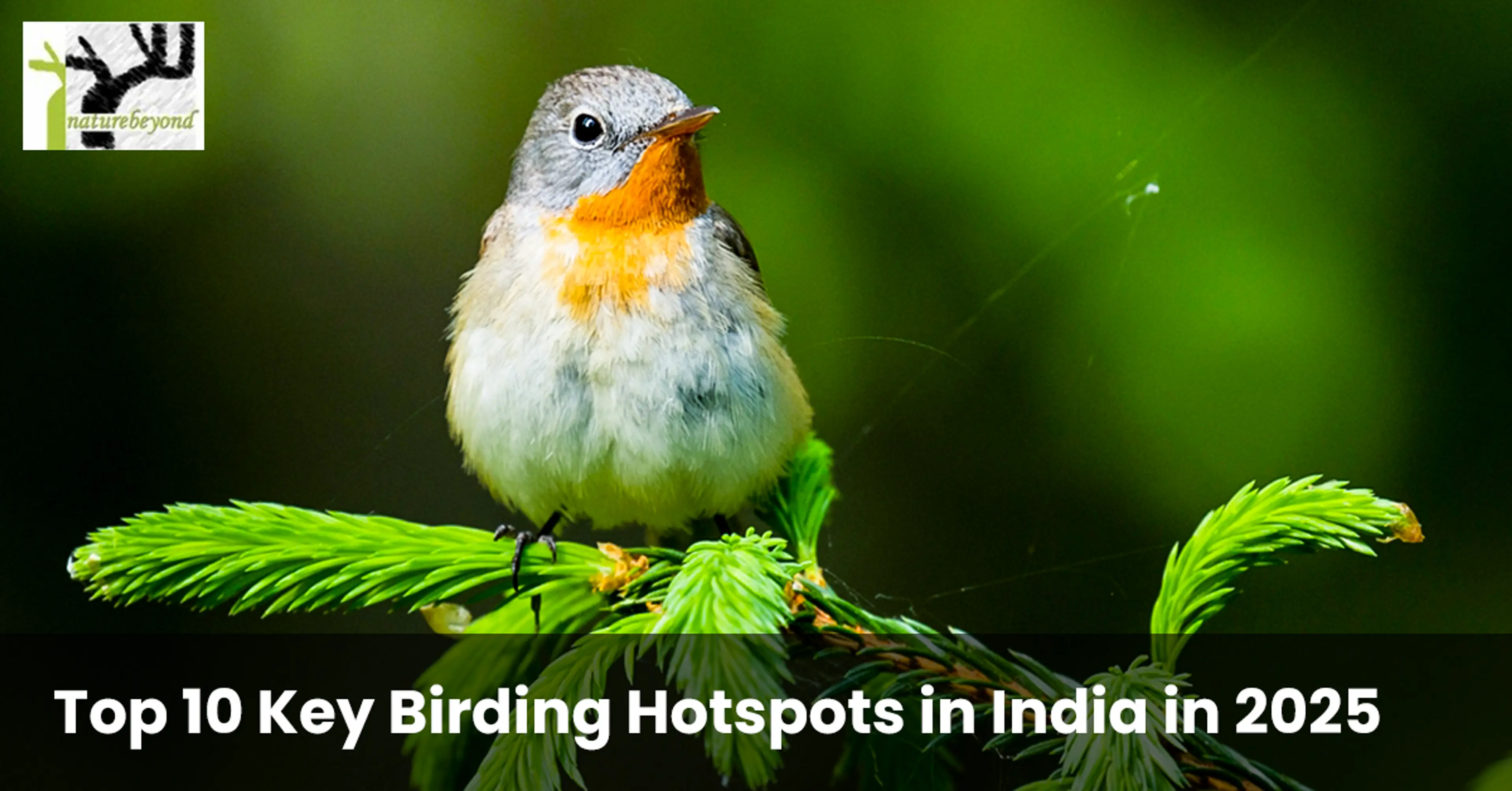
Top 10 Key Birding Hotspots in India in 2025
You’re ankle-deep in a misty wetland, the echo of a Sarus Crane’s call reverberating across the marsh. Somewhere in the canopy above, a Malabar Trogon flits between ancient teak trees. India isn’t just a birding destination it’s an orchestra of wings, waiting to be discovered.
From snow-capped Himalayas to sprawling mangroves, here are India’s top 10 birding hotspots in 2025 each a world of feathery wonders.
1. Bharatpur Bird Sanctuary (Keoladeo National Park), Rajasthan
Best Time: Oct–March
Why It’s Special: A UNESCO gem where over 370 species gather, from vibrant Painted Storks to elusive Siberian Cranes (when lucky).
Pro Tip: Go before dawn! As the sun rises, a golden mist cloaks the wetlands, and the first calls of jacanas and pelicans fill the air.
Star Species:
-
Siberian Crane (Grus leucogeranus, rare)
-
Painted Stork (Mycteria leucocephala)
-
Bar-headed Goose (Anser indicus)
2. Jim Corbett National Park, Uttarakhand
Best Time: Nov–April
Why It’s Special: Tigers might steal the limelight, but over 600 bird species make Corbett a twitcher’s dream. The Great Hornbill’s deep calls echo through the sal forests, while Pallas’s Fish Eagle circles the Ramganga River.
Birding Hack: Stay inside the park for night birding—spotted owlets and jungle nightjars emerge under the moonlight.
Star Species:
-
Great Hornbill (Buceros bicornis)
-
Pallas’s Fish Eagle (Haliaeetus leucoryphus)
-
Scarlet Minivet (Pericrocotus flammeus)
3. Sundarbans National Park, West Bengal
Best Time: Dec–Feb
Why It’s Special: A labyrinth of mangroves where tigers stalk the shadows and Masked Finfoot glide through brackish waters. This is one of India’s last refuges for the Indian Skimmer.
Must-Do: Take a silent boat safari at dusk—you might glimpse a Black-capped Kingfisher darting across the tide.
Star Species:
-
Masked Finfoot (Heliopais personatus, endangered)
-
Mangrove Pitta (Pitta megarhyncha)
-
Indian Skimmer (Rynchops albicollis)
4. Eaglenest Wildlife Sanctuary, Arunachal Pradesh
Best Time: March–May
Why It’s Special: This remote Himalayan haven stunned the world with the 2006 discovery of the Bugun Liocichla, a bird found nowhere else on Earth.
Hidden Spot: Try Lama Camp—locals say it’s where you’ll hear the Ward’s Trogon’s eerie whistle before you see it.
Star Species:
-
Bugun Liocichla (Liocichla bugunorum, critically rare)
-
Ward’s Trogon (Harpactes wardi)
-
Beautiful Nuthatch (Sitta formosa)
5. Ranganathittu Bird Sanctuary, Karnataka
Best Time: Nov–Feb
Why It’s Special: India’s answer to the Everglades—this river sanctuary swarms with painted storks, pelicans, and crocodiles lurking below.
Steal This Adventure: Kayak at sunrise—watch river terns skim the surface while mugger crocodiles bask nearby.
Star Species:
-
Painted Stork (Mycteria leucocephala)
-
Spot-billed Pelican (Pelecanus philippensis)
-
River Tern (Sterna aurantia)
Why Experience Himalaya?
We don’t just take you birding—we craft wilderness expeditions tailored to your passion. Expect local naturalists, hidden trails, and ethical birding practices. Ready for an adventure where every sunrise brings a new chorus? Let’s go.
Final Thoughts: 2025 Birding in India
India’s birding landscapes are evolving. Climate change is shifting migration routes, while community-led reserves are emerging as the next big thing. Whether you’re after the Great Indian Bustard’s last stronghold or a sunrise chorus in the Nilgiris, now’s the time to explore.